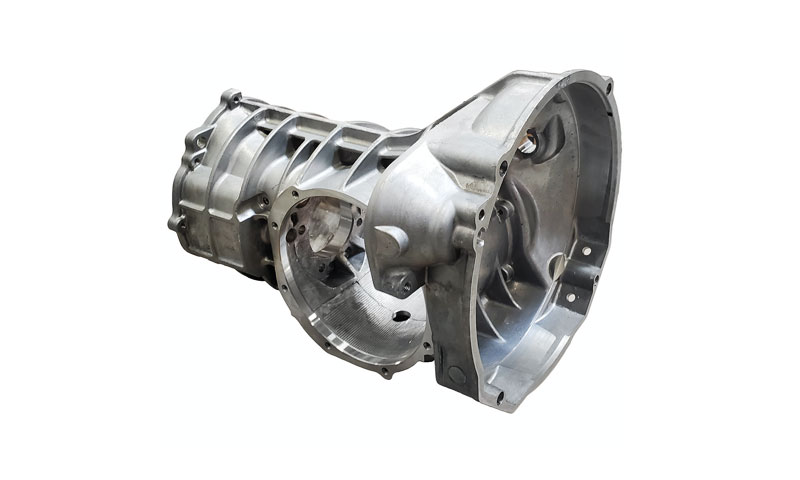1. Tóm tắt điều hành
Nhôm đúc (principally high-pressure die casting, HPDC) is a mature, high-throughput manufacturing route that delivers near-net-shape, chính xác kích thước, lightweight parts with good surface finish for the automotive industry.
It is widely used for housings (transmission, Hộp số, motor), khung cấu trúc, housings for power electronics and pumps, and many accessory parts.
The main engineering tradeoffs are: per-part cost vs. âm lượng, porosity control vs. productivity, Và mechanical performance vs. process/post-process route.
Modern options (HPDC chân không, squeeze, semi-solid, HIP and T6 heat treatments) let engineers match cast part integrity to demanding automotive requirements including safety-critical and fatigue-sensitive applications.
2. Market & engineering drivers for aluminum die-cast parts in automotive
- Lightweighting: switching from steel to aluminum can reduce part mass by ~40–50% for the same volume (Al density ≈ 2.68–2.71 g·cm⁻³ vs steel ≈ 7.85 g · cm⁻³).
Weight reductions directly improve fuel economy/EV range. - Tích hợp & parts consolidation: die casting enables complex geometries, xương sườn tích hợp, bossing and channels that reduce part count and assembly cost.
- Cost at volume: HPDC has low per-part cost at medium-to-high volumes (thousands to millions).
- Nhiệt & EMI needs: die-cast housings for e-motors and power electronics also act as heat sinks and electromagnetic shields.
- Shift to EVs: EV motors and inverters create new high-volume opportunities for precision aluminum cast housings.
- Độ bền & Ăn mòn: appropriate alloys and coatings deliver automotive service life across climates.
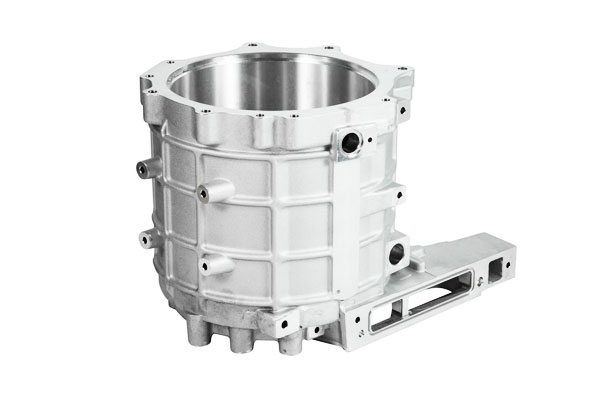
3. Typical aluminum die-casting processes
A key choice is process family — each has different capability/cost:
- Đúc chết áp suất cao (HPDC, buồng lạnh): the industry workhorse for Al automotive parts. Thời gian chu kỳ nhanh, tường mỏng, độ lặp lại tuyệt vời. Best for A380/ADC12 family.
- Vacuum HPDC: adds a vacuum to reduce gas porosity and improve pressure tightness — used for hydraulic housings, oil sumps, safety parts.
- Squeeze / HPDC + Squeeze: applies static pressure during solidification to reduce shrinkage cavities and improve local density; useful for localized critical regions.
- Đúc chết áp suất thấp (LPDC): bottom-fill with low pressure; gentler filling — better for larger/thicker parts but slower.
- Semi-solid / sự truyền lại (thixo): injects semi-solid slurry to reduce turbulence and porosity; higher complexity/cost but improves integrity.
- Post-process routes: Điều trị nhiệt (T6), Nóng isostatic nhấn (HÔNG), machining and surface finishing are common to meet mechanical and fatigue specs.
4. Common Automotive Die-Casting Alloys
| Hợp kim (Tên chung) | Hóa học điển hình (wt%) — Key Elements | Tỉ trọng (g · cm⁻³) | Typical As-Cast Mechanical Range (Uts, MPA) | Typical Elongation (Như đúc, %) | Typical Automotive Uses / Ghi chú |
| A380 (Al–Si–Cu family) | Si 8–10; Cu 2–4; Fe ≤1.3; MN nhỏ, Mg | 2.69–2.71 | 200–320 MPa | 1–6% | General-purpose alloy for housings, bao gồm, gearbox and transmission cases; excellent fluidity and die life. |
| ADC12 (Anh ấy là) / A383 | Similar to A380 with regional spec variations | 2.69–2.71 | 200–320 MPa | 1–6% | Asian industry standard; widely used for electrical housings, Động cơ bìa, và khung cấu trúc. |
| A356 / A360 (Họ Al–Si–Mg) | Si 7–10; Mg 0.3–0.6; very low Cu/Fe | 2.68–2.70 | 180Mạnh300 MPa | 2–8% | Selected for higher ductility, Hiệu suất mệt mỏi, và kháng ăn mòn; often used for structural components and motor housings. |
A413 / High-Si variants |
Elevated Si; microstructure optimized for thick sections | 2.68–2.70 | 180Mạnh300 MPa | 1–6% | Suitable for thicker-wall castings and components exposed to higher operating temperatures; good stability. |
| siêu âm / Si cao (Hợp kim đặc biệt) | Và >12–18% | 2.68–2,72 | Khác nhau; optimized for wear resistance | Thấp | Used for cylinder liner inserts, piston components, or wear-critical surfaces; higher die wear and lower ductility. |
| Proprietary Foundry HPDC Alloys | Tailored chemistries (modified Fe, Sr, Mg, máy tinh chế ngũ cốc) | 2.68–2.71 | Foundry-specified | Application-dependent | Customized for improved fluidity, độ dẻo, tính nhất quán cơ học, die life, or low-porosity casting performance. |
5. Typical Process Parameters & Practical Ranges (Automotive HPDC)
High-pressure die casting for automotive components depends on tight control of melt, die and injection variables.
Below are engineering-level practical ranges and the rationale behind each parameter (use them as starting points for shop trials; final settings must be validated for your alloy, die and geometry).
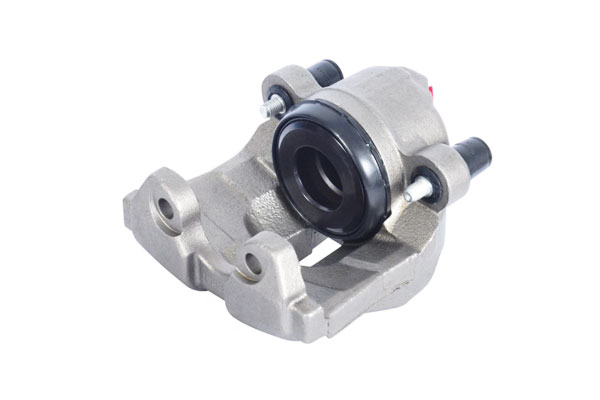
Metal preparation
Melt temperature for common Al–Si alloys typically sits between 660°C and 720°C.
Higher temperatures improve fluidity and help fill thin sections but increase die-soldering and intermetallic growth; lower temperatures reduce shrinkage but risk cold-laps.
Holding furnace setpoints are often 690–720°C to stabilize chemistry and reduce thermal swings.
Dissolved hydrogen must be controlled—target rotary-degassed levels of ≤0.12 mL H₂ /100 g Al (lower for pressure-tight or fatigue-critical parts).
Good skimming and fluxing keep dross low (industry targets commonly <0.3% theo trọng lượng).
Die thermal control
Pre-shot die temperatures are generally in the 150Mùi250 ° C. window for automotive castings.
Die temperature uniformity is crucial—seek to keep thermal gradients small (Ví dụ, ≤30°C across critical cavities) to avoid localized hot spots, shrinkage or warpage.
Spray and cooling cycle timing (spray on/off and coolant flow rates) are tuned to maintain that balance; spray timing is often in the 1–3.5 s range per cycle depending on part mass.
Injection and shot profile
Modern HPDC uses a two-stage shot profile: a slow initial fill to avoid turbulence followed by a high-velocity second stage to complete filling before freezing begins.
Typical slow-stage speeds are 0.1–0.3 m/s, switching to second-stage velocities from 1.5 lên đến 4.5 bệnh đa xơ cứng for most automotive thin-wall parts — very thin sections can see peak speeds up to about 6 bệnh đa xơ cứng.
The switch-over point is commonly set at 40–70% of cavity fill; optimizing that point minimizes flash and short shots.
Tăng cường (or holding) pressures to consolidate metal into the mushy zone commonly range 70MP160 MPa, with higher values (approaching 200 MPA) used for structural, pressure-tight or thin-walled castings.
Vacuum and air-management
Vacuum assistance is widely used for automotive structural castings.
Typical achievable cavity pressures are ≤50 mbar, and critical hydraulic or leak-tight components often use <10 mbar during filling.
Effective vacuum timing requires evacuation immediately prior to fill and maintaining vacuum through initial solidification; fill timing for vacuum HPDC is fast (fractions of a second) so vacuum systems must be capable of rapid cycling.
Hóa rắn, clamping and cycle time
Solidification/cooling times vary with casting mass; small thin parts may cool in 3–6 s, while heavier housings need 8–12 s hoặc nhiều hơn.
Clamp or locking forces scale with projected area—automotive presses range from several hundred to several thousand tonnes depending on part size.
Typical cycle times for automotive HPDC run ~15–60 s overall (fill, củng cố, open, eject), with thin-wall, small parts at the fast end.
6. Design for Die Casting (DFM rules for automotive parts)
Design drives producibility and cost. Key rules:
Độ dày tường
- Target Độ dày tường đồng đều. Typical practical minimum 1–1.5 mm; 1.5–3 mm is common. Avoid sudden changes; Sử dụng chuyển đổi dần dần.
Xương sườn
- Ribs increase stiffness—keep rib thickness ≈ 0.4–0.6 × nominal wall thickness and avoid making ribs thicker than the wall. Use fillets to reduce stress concentrations.
Ông chủ
- Keep bosses supported by ribs, avoid heavy bosses causing hot spots; typical boss wall ≈ 1.5–2× nominal wall thickness but with small internal bosses need core support.
Bản nháp & phóng ra
- Provide draft: 0.5°–2° depending on feature depth and texture. More draft for textured surfaces.
Phi lê & bán kính
- Tránh các góc sắc nét; provide fillets (Tối thiểu 1.0Cấm 3,0 mm depending on scale) to reduce stress concentration and hot tearing.
Gating & tràn
- Design gates and overflows to promote directional solidification. Place gates to feed thick areas and locate vents to avoid trapped air.
Shrink & phụ cấp gia công
- Linear shrinkage allowances typically 1.2–1.8%; specify machining allowances 0.5Cấm2,0 mm depending on feature and finish requirement.
Sức chịu đựng & critical features
- As-cast tolerances commonly ±0.2–1.0 mm; critical bearing bores or sealing faces are usually machined after casting.
7. Typical automotive parts & functional examples
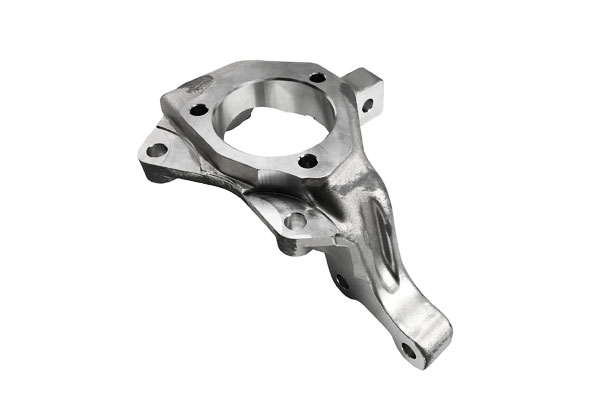
- Quá trình lây truyền / gearbox housings and covers — complex internal bosses, mounting locations; often vacuum HPDC for leak tightness.
- Các thành phần động cơ (bao gồm, oil pumps) — thin walls, integrated bosses; require good surface finish.
- E-motor housings / stator housings — act as structural element and heat sink; often A360/A356 variants and T6 after solution treatment to meet mechanical/thermal requirements.
- Suspension brackets, tay lái (trong một số chương trình) — require high integrity; sometimes cast then heat treated / machined or replaced by forged components depending on fatigue needs.
- Brake caliper housings (certain designs) — require high pressure tightness and fatigue performance; processes may combine HPDC with HIP or squeeze.
- Power electronics housings / inverter casings — require fine features, good thermal conduction and EMI shielding.
Case note: EV motor housings often combine thin fins for cooling, thick bosses for bearings, and require precise roundness on bores — design must account for differential solidification and machining sequences.
8. Cấu trúc vi mô, Tính chất cơ học & Xử lý hậu kỳ
Nhôm die-cast parts derive their performance from a tight interplay between (Một) as-cast microstructure produced by rapid filling and die-cooling, (b) the alloy chemistry, (c) process-related defects (primarily porosity), Và (d) the chosen post-processing route (Điều trị nhiệt, HÔNG, gia công, Phương pháp điều trị bề mặt).
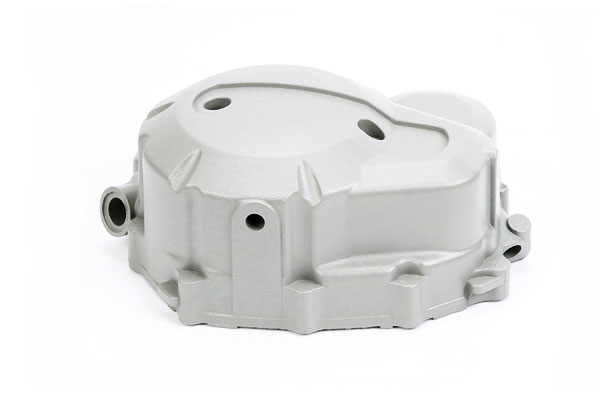
Typical as-cast microstructure — what to expect
- Chilled skin / fine microstructure at the die face. Rapid solidification at the die interface produces a fine, thin “chill” layer (very fine dendrites, refined eutectic) that typically has higher hardness and tends to give good surface strength and wear resistance.
- Intermediate columnar to equiaxed zone. Beneath the chill layer the structure transitions to coarser equiaxed grains and primary aluminum dendrites with interdendritic eutectic (Al - Có) and intermetallics.
- Intermetallic phases. Fe-rich (Al–Fe–Si) platelets/needles and Cu- or Mg-containing precipitates form depending on chemistry; these phases are usually brittle and control ductility, fracture initiation and machinability.
- Silicon morphology. In Al–Si alloys, silicon appears as a eutectic phase; của nó morphology (acicular/platelet vs. modified fibrous) strongly affects ductility.
Sr modification and controlled cooling produce a finer, more rounded silicon which improves toughness and elongation. - Dendrite arm spacing (SDAS). Faster cooling → finer SDAS → higher strength/ductility.
Thin sections solidify faster and therefore typically show better mechanical performance than thick bosses or webs.
Typical mechanical properties
Values below are representative shop-floor engineering targets; actual numbers depend on porosity, SDAS, heat treatment and testing coupon location relative to the casting.
- A380 (typical HPDC alloy)
-
- UTS đúc sẵn: ~200–320 MPa
- Kéo dài: ~1–6%
- độ cứng Brinell (HB): ~70–95
- A356 / A360 (Họ Al–Si–Mg, often used when higher ductility/ageing is required)
-
- UTS đúc sẵn: ~180–300 MPa
- T6 (giải pháp + artificial age) Uts: ~250–360 MPa (common engineering range ~260–320 MPa)
- Sức mạnh năng suất (T6): ~200–260 MPa
- Kéo dài (T6): ~4–10% depending on porosity
- Độ cứng (HB, T6): ~85–120
- A413 / high-Si variants — similar UTS bands to A356 as-cast; designed for thicker sections and thermal stability.
Important caveat: Độ xốp (khí + co ngót) is a dominant modifier.
Ví dụ, even modest increases in average porosity (0.5 → 1.0 vol%) can reduce apparent tensile and, đặc biệt, fatigue performance substantially — typical fatigue strength reductions of 20–50% are common depending on pore size/position and test conditions.
Post-processing routes and their effects
Giải pháp xử lý nhiệt & Lão hóa nhân tạo (T6)
- Who uses it: primarily Al–Si–Mg alloys (A356/A360) to raise strength and ductility.
- Typical cycle (engineering guideline): solutionize ~520–540°C (≈ 6–8 h) depending on casting section size, quench rapidly (Nước), Sau đó tuổi ở tuổi 155–175°C for 4–8 h (time/temp optimized per alloy).
- Tác dụng: increases UTS and yield, Cải thiện độ dẻo, but accentuates the mechanical consequence of any remaining porosity (Tức là, pores become more damaging after T6 because matrix strength is higher).
- Design implication: low porosity must be achieved prior to T6 if fatigue is critical.
Nóng isostatic nhấn (HÔNG / sự cô đặc lại)
- Mục đích: close internal shrinkage porosity and microcavities to recover near-full density and improve fatigue life and toughness.
- Typical engineering HIP window for Al alloys:~450–540°C Tại ~100–200 MPa for 1–4 hours (process and cycle chosen to avoid over-aging or detrimental microstructural coarsening).
- Tác dụng: can increase ductility and fatigue life dramatically; used selectively where cost justified (VÍ DỤ., safety-critical or aerospace-grade automotive components).
Squeeze / in-die pressure
- Tác dụng: applies static pressure during solidification to reduce shrinkage porosity, improving local density in thick regions without post-cast HIP.
Bắn peening / surface mechanical treatments
- Tác dụng: induces compressive residual stress near surface and improves high-cycle fatigue resistance; commonly used on critical fillets, bolt holes or machined faces.
Lớp phủ & bề mặt hoàn thiện
- Anodizing, e-coats, sơn protect against corrosion and may mask small surface pores but do not repair structural porosity. Sealing of anodic films improves corrosion resistance in aggressive environments.
Stress relief anneals
- Light stress relief (VÍ DỤ., low-temp aging or stress relief at ~200–300°C) can reduce residual casting stresses from thermal gradients, improving dimensional stability and reducing SCC risk in susceptible alloys.
9. Khiếm khuyết chung, Nguyên nhân gốc rễ & Remedies
| Khuyết điểm | Vẻ bề ngoài / Sự va chạm | Common root causes | Remedies |
| Độ xốp khí | Spherical pores, lowers strength | Thu hydro, đầy hỗn loạn, poor degassing | Khử khí tan chảy (quay), lọc, điều chỉnh hồ sơ bắn, HPDC chân không |
| Độ xốp co ngót | Irregular cavities in last-solid areas, reduces fatigue | Cho ăn kém, insufficient intensification/holding | Re-design gates/runners, increase intensification, local chills or squeeze/HIP |
| Đóng lạnh / thiếu sự hợp nhất | Surface line/weakness where flows meet | Nhiệt độ nóng chảy thấp, Làm chậm chậm, poor gate location | Increase melt temp/velocity, redesign gate for flow |
| Giọt nước mắt nóng bỏng / bẻ khóa | Các vết nứt trong quá trình đông đặc | Tính kiềm chế cao, localized hot spots | Thêm phi lê, modify gating/solidification path, add chills |
| hàn (die stick) | Kim loại dính vào chết, poor finish | Nhiệt độ khuôn, hoá học, lubrication failure | Adjust die temp, lớp phủ, better lubricant |
| Flash | Excess metal at parting line | chết mặc, sai lệch, excessive pressure | Die maintenance, tighten clamping, optimize pressure |
| Bao gồm / xỉ | Non-metallic chunks inside casting | Ô nhiễm tan chảy, filtration failure | Lọc, better melt skimming, furnace maintenance |
| Dimensional drift / WARPAGE | Tính năng vượt quá dung sai | Thermal gradients, độ co rút không được tính đến | Die compensation, cải thiện khả năng làm mát, mô phỏng |
10. Kinh tế & program considerations
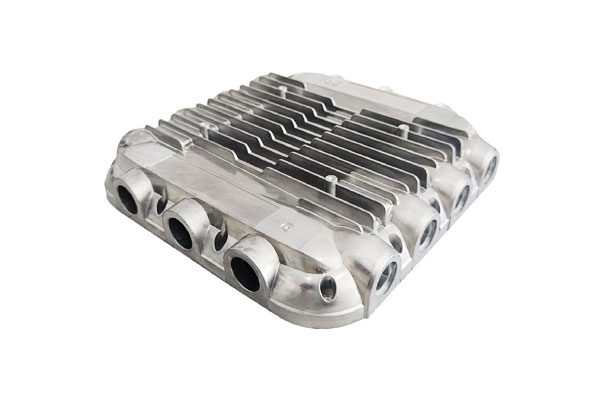
- Chi phí dụng cụ: die cost ranges from tens to hundreds of thousands USD depending on complexity and inserts. Lead time weeks to months.
- Trình điều khiển chi phí mỗi phần: chi phí hợp kim, Thời gian chu kỳ, tỷ lệ phế liệu, gia công, finishing and testing.
- Break-even volume: high tooling cost means die casting is economical from thousands to many tens/hundreds of thousands of parts—depends on part mass and machining needs.
- Supply chain considerations: secure raw alloy supply; heat treatment and machining capacity; NDT capability; risks for die revisions. Design for serviceability and manufacturing early.
11. Bền vững & tái chế
- Aluminum recyclability: aluminum scrap is highly recyclable; recycled aluminum (sơ trung) uses roughly ~5% of the energy required for primary smelting (a long-standing engineering estimate).
Using recycled content reduces embodied energy substantially. - Hiệu quả vật chất: near-net-shape casting reduces machining waste vs billet machining.
- Process energy: melting is energy-intensive; efficient melt practice, waste heat recovery and higher recycled content help lower footprint.
- End-of-life: die-cast parts are recyclable; scrap segregation (clean Al vs coated) aids recycling.
- Lightweighting lifecycle benefit: weight savings in vehicles reduce fuel/energy use across life cycle; quantify with LCA for program decisions.
12. Aluminum Die Casting vs. Alternative Automotive Materials
| Vật liệu / Route | Typical manufacturing routes | Tỉ trọng (g · cm⁻³) | Độ bền kéo điển hình (MPA) | Typical automotive uses | Lợi thế chính | Key limitations |
| Aluminum — HPDC (A380 / A356 family) | Đúc chết áp suất cao (buồng lạnh), HPDC chân không, squeeze | 2.68 - 2.71 | As-cast ~180–320; T6 (A356) ~250–360 | Transmission/gear housings, Vỏ xe máy, cơ thể bơm, khung cấu trúc, inverter housings | Nhẹ, good castability for complex thin-wall parts, Hoàn thiện bề mặt tuyệt vời, Độ dẫn nhiệt tốt, có thể tái chế | Porosity sensitivity (fatigue/pressure), limited very-high-temp performance, high tooling cost for low volumes |
| Steel — stamped/forged (thấp- & Thép cường độ cao) | Dập, rèn + gia công, đúc | ~ 7,85 | ~300–1000+ (low-carbon → AHSS/forgings) | Chassis members, suspension arms, safety-critical structural parts | Sức mạnh rất cao & độ dẻo dai, established manufacturing chain, cost-effective for many parts | Nặng hơn (mass penalty), corrosion protection often required, multi-process assembly vs integrated cast parts |
| Gang (gray/ductile) | Đúc cát, khuôn vỏ | ~6.9 – 7.2 | ~150–350 (gray lower, ductile higher) | Khối động cơ (legacy), trống phanh, vỏ nặng | Kháng mặc tuyệt vời, giảm xóc, low cost for large parts | Nặng, limited thin-wall capability, machining-heavy, poor for lightweighting |
| Magnesium — die casting | HPDC (magnesium dies), squeeze | ~1.74 – 1.85 | ~150–300 | Bảng điều khiển, steering wheels, vỏ nhẹ | Extremely low density (best weight savings), good stiffness-to-weight, good die-castability | Kháng ăn mòn thấp hơn (requires protection), flammability concerns in melting, higher material cost and lower ductility vs Al in many alloys |
Engineering thermoplastics (VÍ DỤ., PA66 GF, PPA, PPS) |
Đúc phun | ~1.1 – 1.6 (glass-filled higher) | ~60–160 (glass-filled grades) | Interior trims, some housings, non-structural brackets, air ducts | Low cost for high volumes, excellent integration of clips/features, corrosion-free, Trọng lượng thấp | Temperature limits, lower stiffness/strength than metals, poor high-load fatigue performance, dimensional stability vs metals |
| Vật liệu tổng hợp (CFRP / hybrid) | Layup, resin transfer molding (RTM), automated fiber placement | ~1.4 – 1.7 (system dependent) | ~600–1500 (fiber-direction) | High-end structural panels, crash structures, tấm cơ thể (low-volume/EV) | Exceptional specific strength & Độ cứng, excellent lightweighting potential | Chi phí cao, anisotropic properties, challenging reparability and joining, longer cycle times for many processes |
| Aluminum — sand / đúc khuôn vĩnh viễn | Đúc cát, khuôn vĩnh viễn | ~2.68 – 2.71 | ~150–300 | Vỏ lớn, brackets where thin walls not required | Lower tooling cost than die casting for low volumes, good large-part capability | Lower surface finish and accuracy than HPDC, heavier sections, more machining |
13. Phần kết luận
Automotive aluminum die casting is a transformative technology that enables the lightweighting, electrification, and sustainability goals of the global automotive industry.
Its unique combination of high-volume efficiency, part integration, and cost competitiveness makes it irreplaceable for powertrain, cấu trúc, and EV-specific components.
As EV adoption accelerates and gigacasting scales, aluminum die casting will remain a cornerstone of automotive innovation—driving lighter, hiệu quả hơn, and sustainable vehicles for decades to come.
Câu hỏi thường gặp
What alloy is best for an EV motor housing?
Common choices are A356/A360 (Al–Si–Mg) when T6 strength and thermal performance are needed; A380 is used for lower-stress housings.
Final choice depends on porosity tolerance, heat treatment capability and machining requirements.
How thin can walls be die cast?
Typical practical minimum is ~1.0–1.5 mm; achievable down to ~1 mm in optimized tooling and process, but expect stricter controls.
Does vacuum HPDC eliminate porosity?
It significantly reduces Độ xốp khí and improves pressure tightness but does not fully eliminate shrinkage porosity; squeeze, HIP or improved gating may be needed for near-full density.
How long does a die last?
Die life varies widely—thousands to several hundred thousand shots—depending on alloy, die steel, lớp phủ, cooling and maintenance.
Is die casting sustainable?
Yes—especially when high recycled aluminum content is used and near-net shape reduces machining waste.
However melting and die production consume energy; process optimization is essential for best lifecycle performance.
